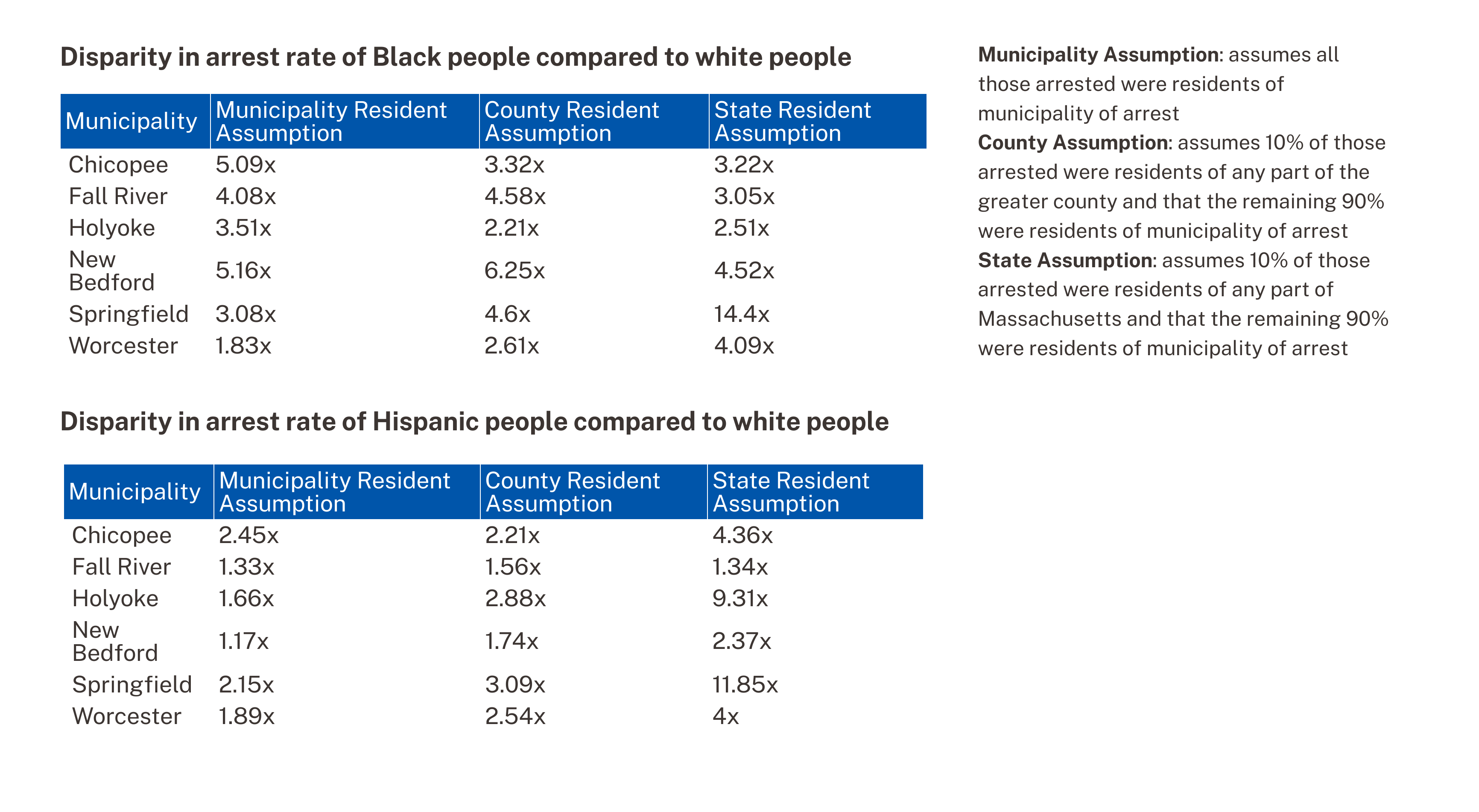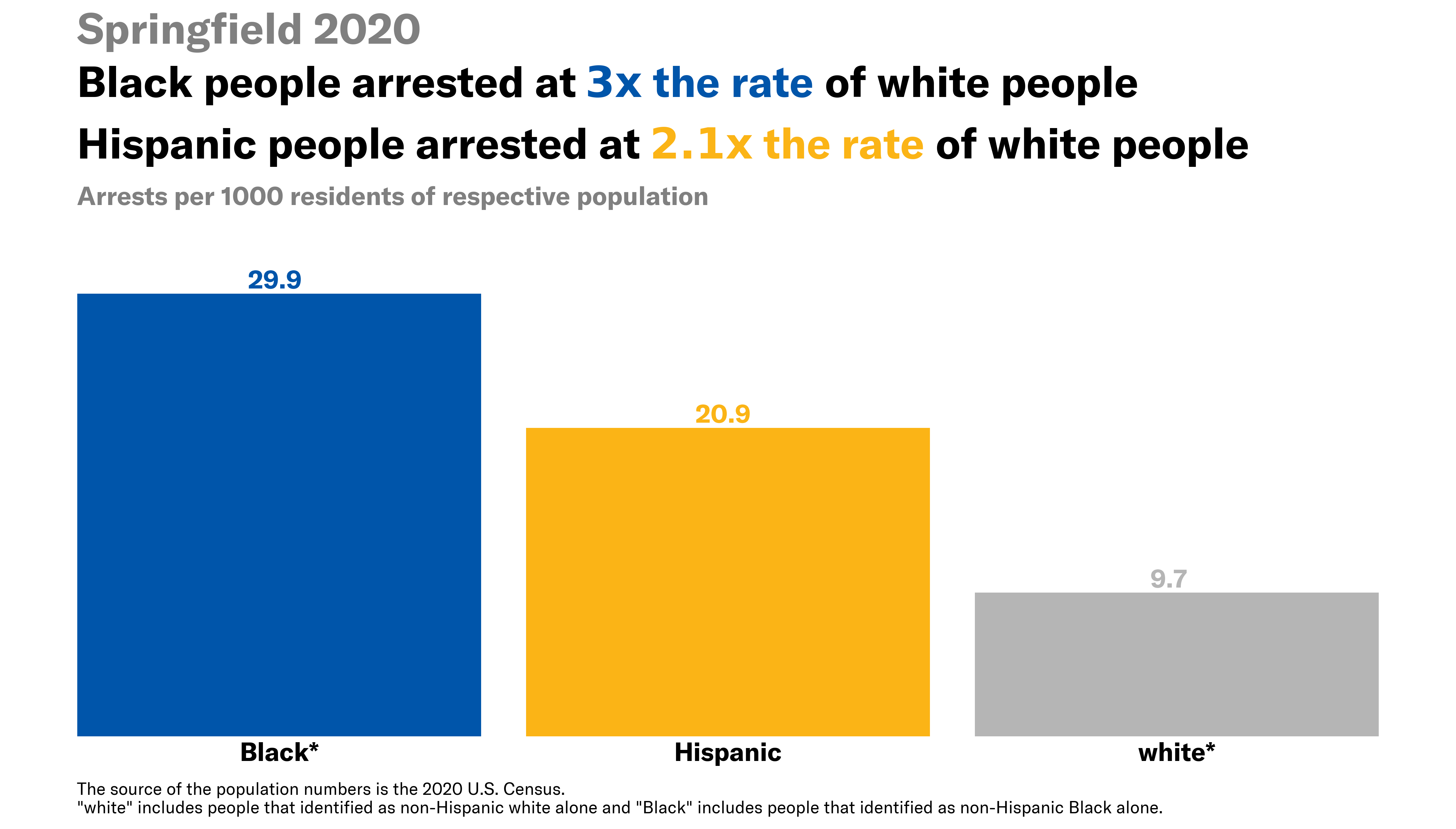New analysis from students at the Boston University Spark! Lab and the ACLU of Massachusetts Data for Justice Project reveal troubling racial disparities in arrests in communities across Massachusetts. Our analysis uses data newly available thanks to ACLU advocacy in 2018, which led to the inclusion in that year’s omnibus criminal law reform legislation of language mandating the collection and reporting of statewide arrest data.
Section 5 of Chapter 69 of the Massachusetts General Laws requires all police departments to collect and report arrest data statistics to the Executive Office of Public Safety and Security (EOPSS), which is required to post this information online. These records allow residents, researchers, advocates, lawmakers, journalists and other interested parties to see how specific police departments use their arrest powers and enable us to conduct statewide reviews to compare departments to one another.
Arrests data from 2020 show signs of significant racial disparities.
Our analysis suggests there were significant racial disparities in arrest rates across the state in 2020. After a statewide review of the data, our team identified six cities with unusually high rates of arrest and focused on these communities for more in-depth analysis. When compared to the resident population in the six cities analyzed—Fall River, Chicopee, Holyoke, New Bedford, Springfield, and Worcester—Black and Hispanic people were arrested at a much higher rate than white people.
Of these six cities, New Bedford had the highest arrest rate disparity for Black people; Black people were arrested at 5.2x the rate of white people when compared to share of resident population. The disparity for Hispanic people was highest in Chicopee where Hispanic people were arrested at 2.5x the rate of white people. A statewide comparison shows the same concerning pattern. Across the state in 2020, Black people were arrested at 2.9x the rate of white people, and Hispanic people were arrested at 2x the rate of white people.
There are some limitations in the data provided by the state. For example, the data do not indicate whether those arrested were residents of the municipality where police made the arrests.1 Nonetheless, comparison of the share of arrests by race to the overall resident population still provides a valuable way to identify potential disparities. Furthermore, the indications of racial disparity are consistent with other reports, such as a 2021 analysis of the same Massachusetts state arrests dataset by NBC10 Boston and students from Boston University’s Justice Media Computational Journalism co-lab. The stark disparities in arrest rates indicated here are considerable and call for continued attention and action.
We can’t manage what we don’t measure. The reporting of arrest data mandated by the 2018 criminal law reform allows us to identify racial disparities in arrests in communities statewide. But analyzing the data is only the first step. Cities and towns need to take a close look at their policies, procedures, and police management to understand why these disparities are occurring, and take corrective action to address them.
Data analysis was conducted by Boston University students including Nikoloz Rapava, Sheila Yee, Natalia Clark, and Xi Li under the supervision of the BU Spark! Program based at the BU Faculty of Computing & Data Sciences and led by Ziba Cranmer (BU) with project management support from Della Lin (Project Manager). This work was done in collaboration with ACLUM.
1 Since the data do not indicate whether or not the arrestee was a resident of the location where they were arrested, the analysis was tested under the case that some portion of arrestees resided in a different part of the state. Even with this modification, Black and Hispanic people were arrested at a much higher rate than white people.
Below is the analysis of arrest rates disparities for Black and Hispanic people assuming 10% of those arrested were residents of any part of the greater county or state.







